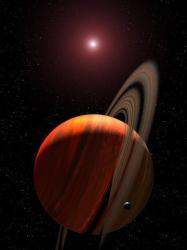So say astronomers who have started a project to map the life zones around the nearby stars that will be a target for locating Earth-like planets, when the technology allows it

The Research Consortium on Nearby Stars (RECONS) project will use relatively small telescopes to study the habitable zones of nearby stars. The team will investigate whether the variation in the brightness of the stars in the telescopes in the visible and infrared range corresponds to the distance to them and to get a sense of the possibility of life near the star.
After studying a long list of candidate stars, the researchers will be able to categorize the stars according to their size and temperature to find those suitable to be a source of light and heat for life.
"After determining the values for the temperatures and sizes of the nearby stars, we can estimate how planets will develop at different distances from the stars." explains Justin Cantrell, associate professor of astronomy at Georgia State University. "We will consider the planets whose surfaces can accommodate liquid water as being in the habitable zone."
The researchers looked for life zones around red dwarfs, stars that are 50-90 percent smaller than the Sun and much colder. This population makes up 70% of the stars in the Milky Way, but is more difficult to detect due to their fainter light. They were surprised to find that these red dwarfs also have a habitable zone, but its size is tiny. When they added up the volume of the habitable zones of 44 red dwarfs close to us, the total combined did not equal that of a single star such as our Sun. So despite their explosiveness, they are not good candidates for detecting life. Earth-like planets would need to be located in the exact spot in the tiny habitable zone for them to be good candidates for life.
Then there will be no need to wait for space telescopes that are sensitive enough and direct them to the most promising solar systems.

One response
Life is everywhere